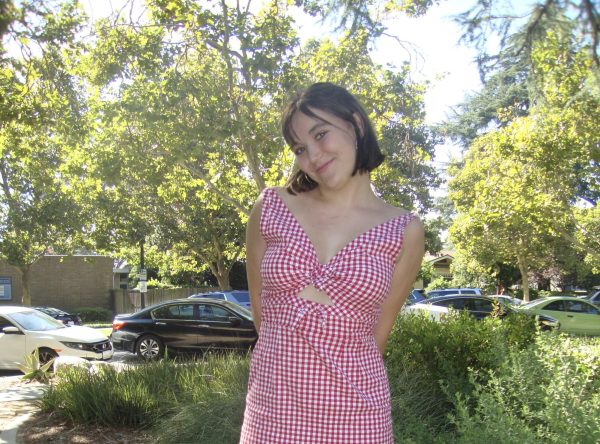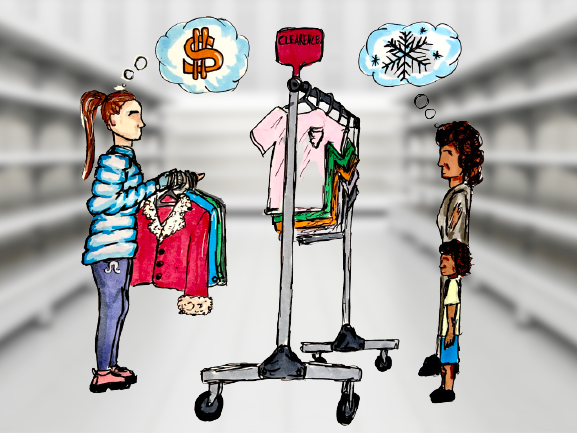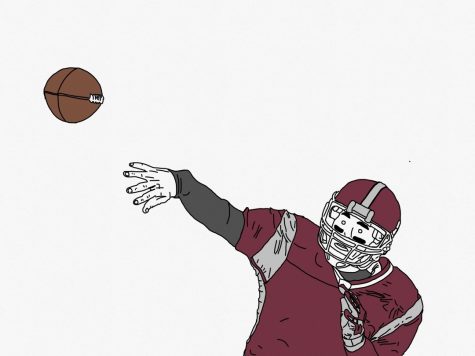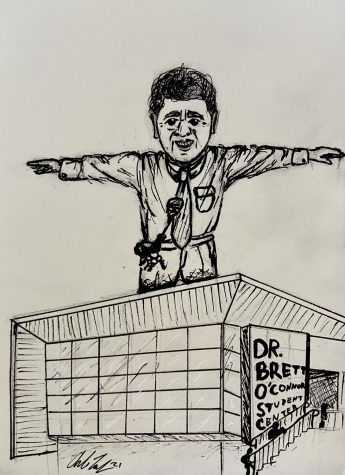Thrifting, sustainable and accessible fashion, under threat
Who would have thought, 100 years ago, that old clothes from strangers could ever become the peak of fashion and trendiness? Shops that are now referred to as “thrift stores” originated in the late 19th to early 20th century as places that would provide sanctuary for poor men in exchange for their work collecting scraps of paper and other things people were getting rid of. Now, in 2021, thrifting is the most popular way for teens and young adults to shop. Why? Because thrift stores provide them with the opportunity to buy clothing at cheaper prices than retail stores. They also allow them to create their own personal style by buying unique, one-of-a kind pieces. Anything from clothes and shoes to home decor can be found at local thrift stores like Goodwill. However this isn’t the only benefit that comes from shopping at thrift stores. Whether teens know it or not, they are servicing the environment every time they choose to spend money at a second-hand store instead of buying from popular brands that can be found at malls.
“Fast fashion,” the mass production of inexpensive clothing to meet trends as rapidly as possible, is an increasing problem around the globe. The fashion industry alone is responsible for 10% of the world’s carbon emissions. This is more than is emitted by all international airline flights combined. It is also the second-largest consumer of water supply worldwide. The process that manufacturing companies use to wash clothes releases 500,000 tons of microfibers into the sea annually. This effect is equivalent to 50 billion plastic water bottles. Even producing a single pair of jeans takes nearly 2,000 gallons of water, and a single cotton shirt can require as much water as a grown person would drink in two and a half years. This is especially dangerous when the crops used to produce clothes are grown in poor rural areas, because water is taken away from those who need it most in order to make cheap products for fashion companies. Not only are the brands that do this unethical because of the damage they cause to the environment; it is no secret that plenty of them overwork and underpay their workers—some even using child labor. The International Labor Organization has estimated that around 170 million children are “engaged in” child labor, and a large amount of this comes from the fashion industry.
What separates thrift stores from this toxic, unethical cycle of production is that shopping second-hand is like recycling but for clothes. The average American gets rid of about 81 pounds of clothing each year. Thrifting is a living example of the saying “One man’s trash is another man’s treasure.” Instead of ending up in a landfill, like 85% of textiles do every year, clothes that are donated to thrift stores will be able to find a second, third, or even fourth home. The items can be recycled and reused over multiple years without waste until they literally disintegrate.
Moreover, thrift stores are extremely affordable—and although there is often conflict about whether or not the clothes in stores should be left for people who rely on access to affordable clothes when shopping at stores like Goodwill, the money customers spend is donated to charities or community service organizations. Goodwill has a charitable commitment of 88 percent. This way, the little money that people do spend goes back into the community and is for a good cause.
However, there are some people who take advantage of the sustainability, accessibility, and affordability of thrift stores. Anyone who has been on the app “Depop” is most likely familiar with this. It has become all too common to see teens purchasing a plethora of clothes from thrift stores and then reselling the same items they bought for only a few dollars for extremely jacked-up prices on apps like Depop, Poshmark, or even on Instagram. These sellers will often use buzzwords like “vintage,” “90s,” or “Y2K” when describing their items, in order to get higher offers. For example, a person could buy a tank top at a thrift shop for $1.99, post it on their Depop account for $30, and advertise it with the caption “Vintage top. Such a cute 90s vibe!!!” and someone will inevitably buy it. This can be frustrating to encounter, as it defeats a lot of the pros that naturally come along with thrift shopping—taking away the intent of contributing to charity and replacing it with the desire to profit personally. Although when it comes to reselling online, a lot of the time it is just a game of marking up prices, and as questionable as the intentions of those sellers might seem, people always appear willing to purchase their overpriced products. But the colossal and leading problem caused by resellers is the raiding of resources from people who need thrift stores. While becoming increasingly popular among wealthy people, thrift stores aim—and exist—to provide clothing for those who don’t have the money to shop at places like department stores. Resellers generally cherry-pick the highest quality items and buy in bulk for aesthetic purposes or for their own financial gain. When they do this, they are leaving less for those who genuinely rely on thrifted clothes. This can have a destructive effect on those living in the community that are depending on access to affordable clothing.
At the end of the day, the majority of thrifting is beneficial in almost every way. The sustainability and affordability should not be overlooked.
Hello there! Our goal is to provide relavent, engaging journalism for readers of all ages. Your donation will support the student journalists of the Wolfpacket at Claremont High School, and will allow us to purchase equipment, print our monthly issues, and enter in journalism competitions. We appreciate your consideration!

Izzy Thomas is a senior at CHS and one of the three Editors-in-Chief for The Wolfpacket. Her hobbies include taking photos, cooking, playing guitar, and...





